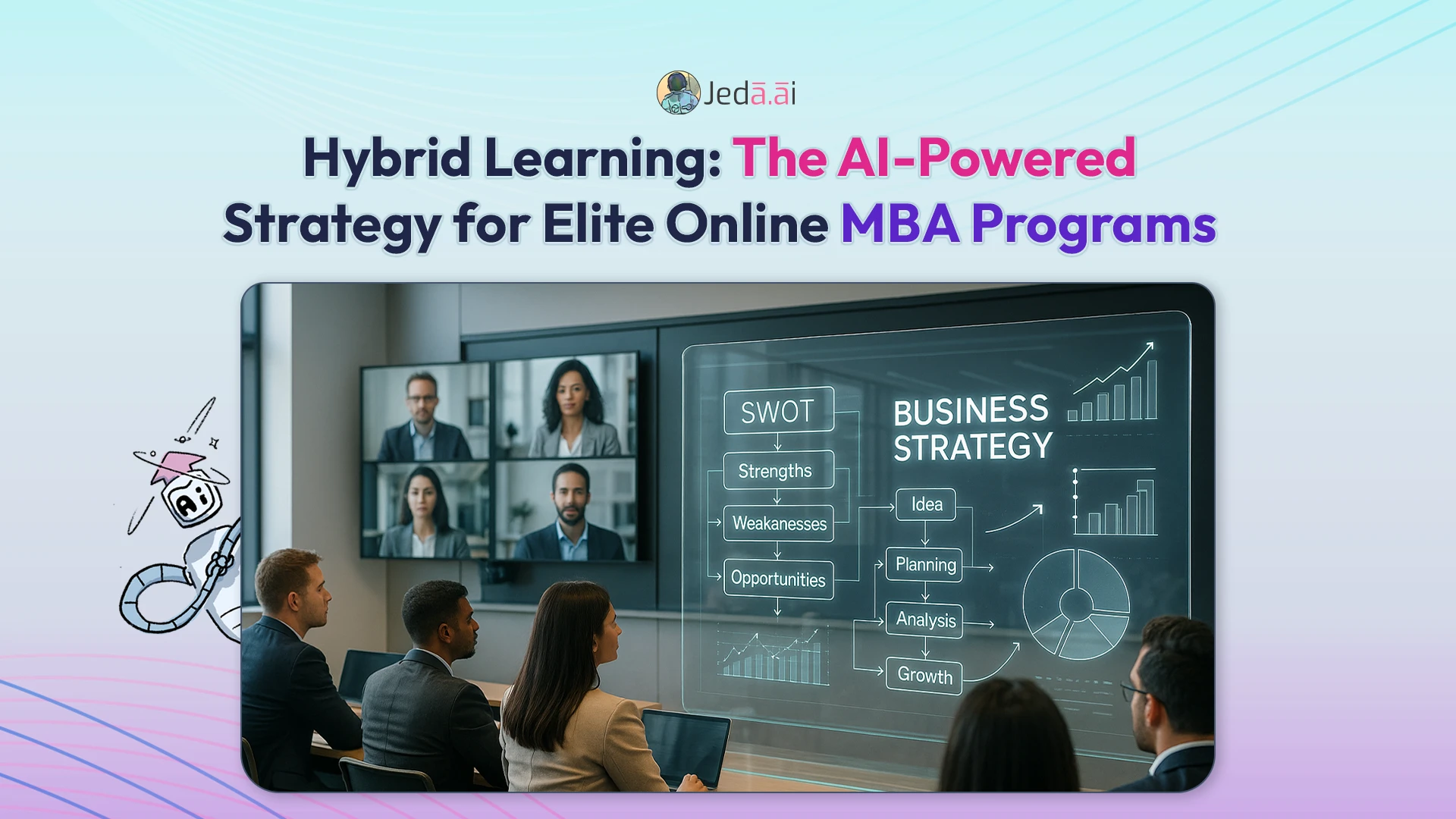
Seamless Hybrid Learning with Agentic AI Whiteboard - Jeda.ai
September 15, 2025
Hybrid Learning - The Secret to Dominating Modern MBA Education with Jeda.ai's Agentic AI Whiteboard
Hybrid Learning creates a unified classroom. This modern educational model seamlessly connects in-person students with remote participants in real-time. It's the strategic future for top-tier programs, breaking down geographical barriers to create a more dynamic and inclusive learning environment. Embrace the flexibility of Hybrid Learning with Jeda.ai.
Hybrid Learning directly boosts enrollment and competitiveness. For Program Directors, it's a powerful tool to attract a global cohort of working professionals, increasing access without sacrificing the quality of a live, interactive classroom. This modern approach is key to improving student retention and educational outcomes through Hybrid Learning.
Hybrid Education succeeds when it reduces complexity, not adds to it. The goal is to equip faculty with a simple, reliable setup that engages every student equally, whether they're in the room or online. This means less focus on managing technology and more on delivering effective, impactful lessons with Hybrid Learning.
TL;DR: Your Hybrid Learning Solution
✨ Hybrid Learning breaks down barriers between in-person and remote students.
✨ Solve engagement gaps and administrative overload with one visual AI Workspace.
✨ The Agentic AI Whiteboard - Jeda.ai fosters collaboration and active co-creation.
✨ Build a unified cohort and achieve better educational outcomes effortlessly.
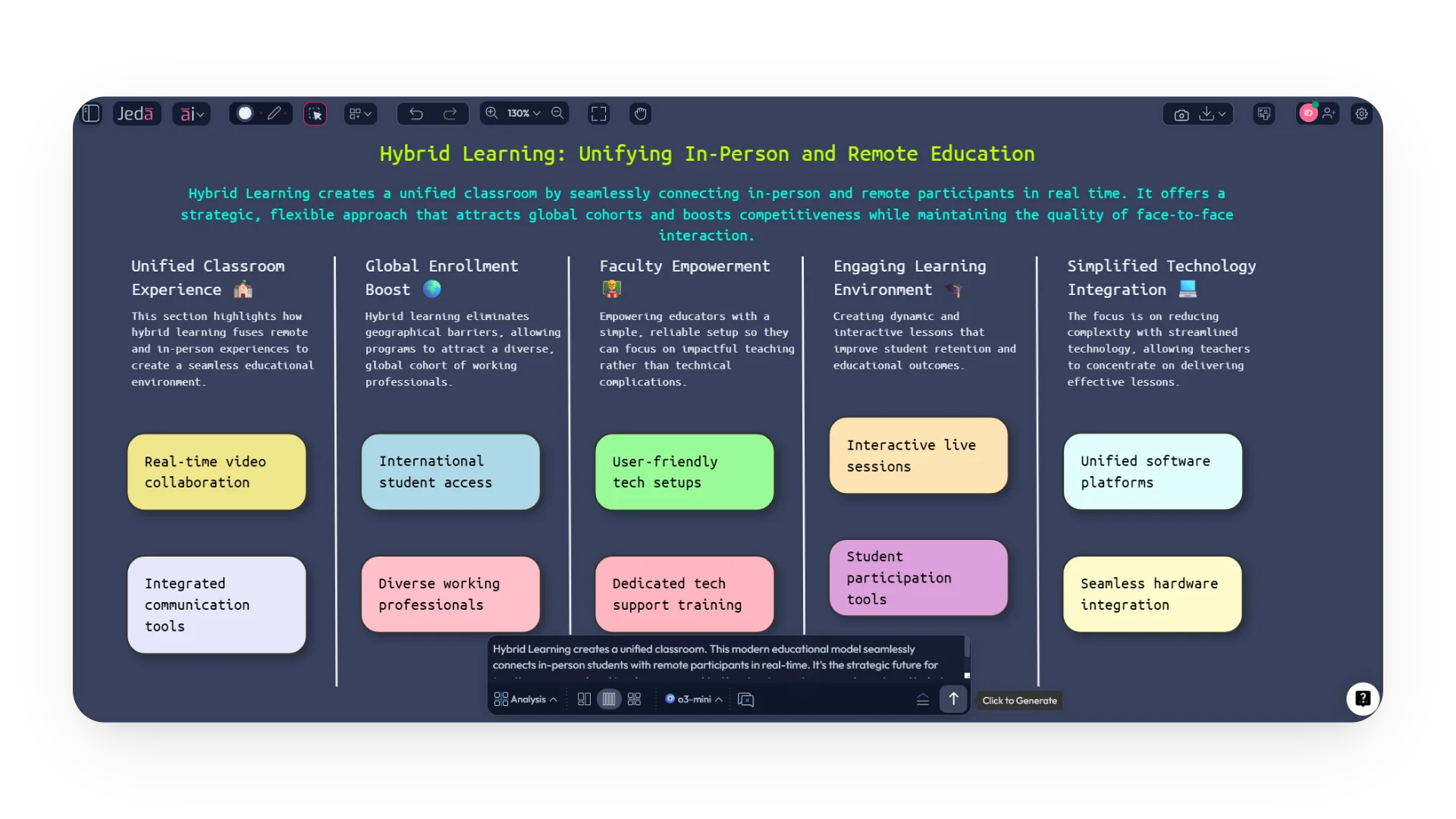
Clearing Up the Hybrid vs. Blended Confusion
Hybrid Learning is all about synchronizing your classroom. Think of it like a live television broadcast where everyone tunes in at the same time, whether they're in the studio audience or at home. This real-time connection is the core of a cohesive Hybrid Learning experience.
Why the Distinction Matters for Your Program
Hybrid Education builds a unified cohort, which is crucial for program directors focused on community and retention. Unlike blended models where students work at their own pace, this approach ensures all students, remote and in-person, progress together through synchronous collaboration, strengthening the entire program's Hybrid Learning model.
A Simpler Framework for Your Team
Hybrid Learning simplifies instructional design by focusing on a single, live event format. For technology coordinators and faculty, this means designing one dynamic lesson that serves everyone simultaneously, reducing the complexity of managing multiple asynchronous tracks and streamlining the entire Hybrid Learning process.
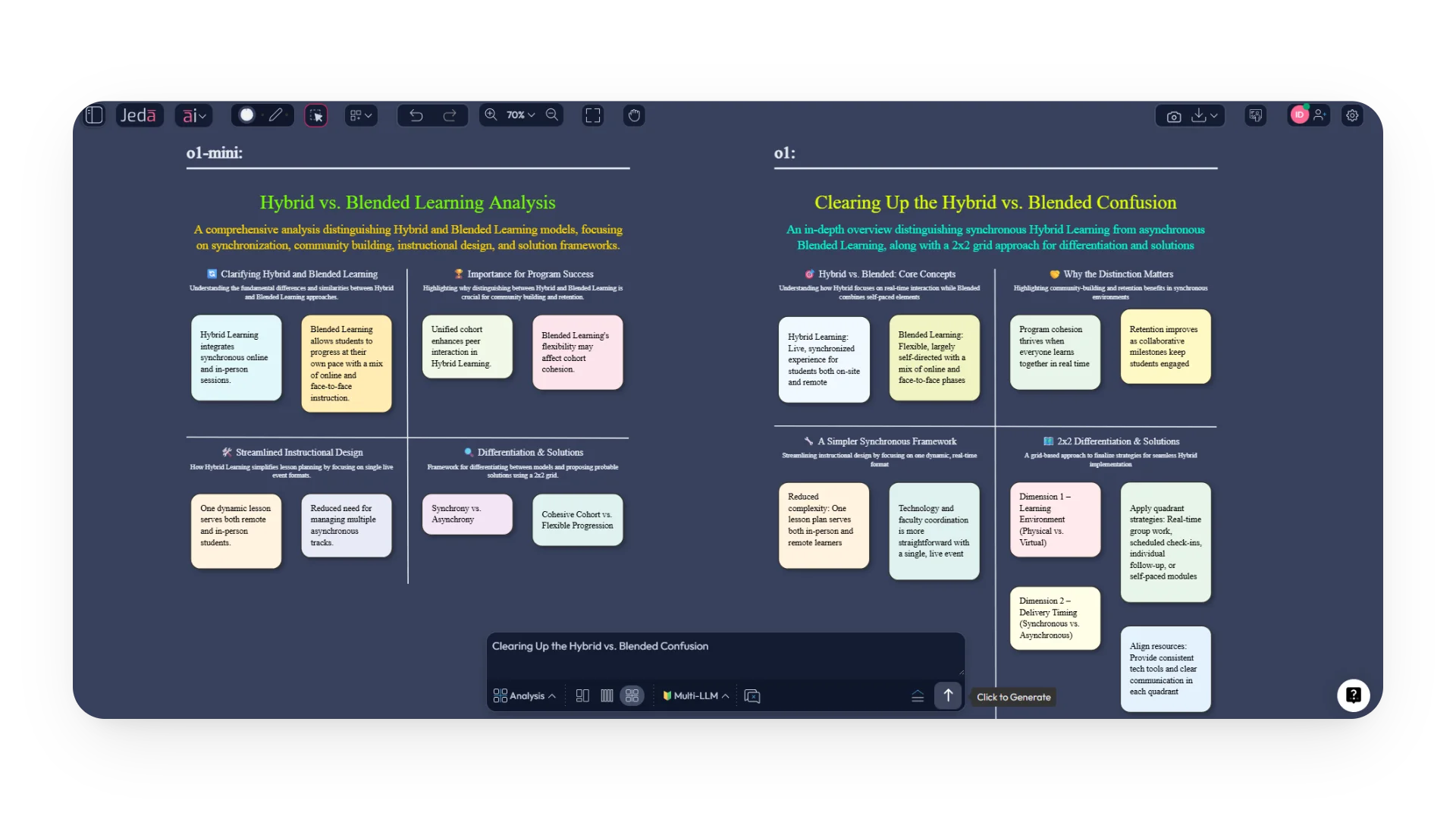
The Unmatched Benefits of Hybrid Learning for Modern MBA Programs
Hybrid Education directly addresses the challenge of keeping busy professionals invested. By blending scheduled, meaningful in-person sessions with flexible online modules, this model fosters a stronger sense of community and accountability than fully online programs often can, leading to a more engaged and committed student body.
Flexibility and Global Access
Hybrid Education breaks down geographical and scheduling barriers for modern MBA candidates. It allows a working professional on one coast to collaborate on a group project with peers from other regions without anyone needing to relocate or quit their job. This flexibility is a powerful enrollment driver, creating a global classroom where diverse professional perspectives enrich every discussion and create a unique competitive advantage for your program.
Increased Social Support and Engagement
Building a cohesive cohort is crucial for retention, and Hybrid Learning is designed to foster it. The scheduled in-person components are key; they help students and faculty build stronger, trust-based relationships during intensive residencies or weekend sessions. This foundational social support makes them significantly more comfortable and active in online discussions later, creating a seamless and supportive learning journey that keeps students connected.
Proven Effectiveness and Higher Retention
The data speaks for itself: Hybrid Education is highly effective. Studies indicate that retention rates for online and hybrid learners can be significantly higher than in traditional classrooms. Furthermore, a majority of students report being more motivated by hybrid models and find that this format helps them retain information faster. For program directors focused on educational outcomes, this translates to more students successfully completing their degrees.
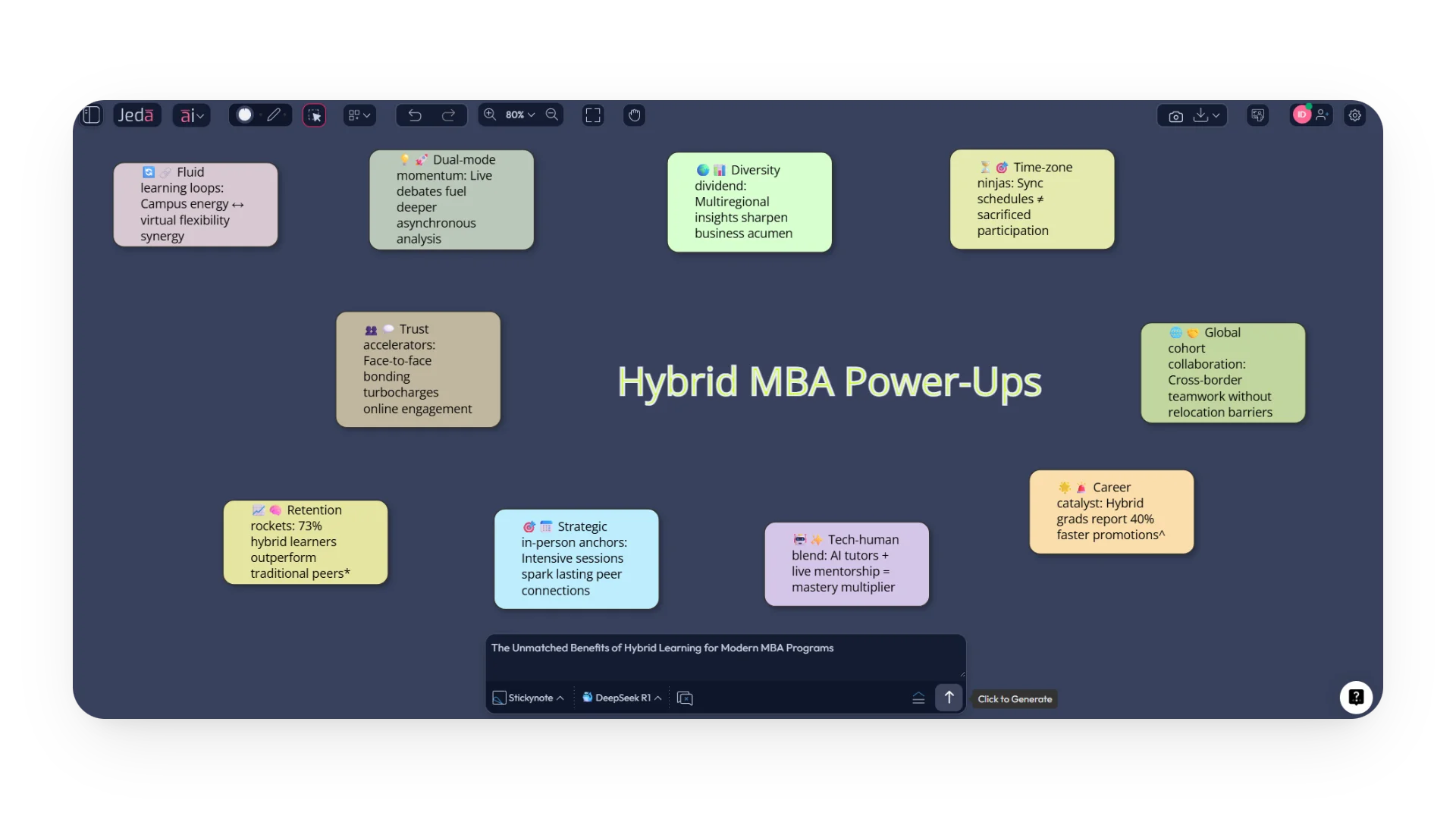
The Top 5 Challenges of Hybrid Learning for Online MBA Programs
Bridging the In-Person and Digital Divide
A key hybrid learning challenge is creating an equal experience for all students. Remote participants can easily feel like second-class citizens, leading to disengagement. This occurs when the classroom dynamic naturally focuses on those physically present, causing online students to passively observe rather than actively participate.
Doubling the Faculty Workload
Hybrid teaching often means showing up twice - once in the physical classroom and again in the online one. Faculty face an immense burden, juggling multiple communication modes, managing logistics for two audiences, and feeling pressure to be constantly responsive, which significantly increases their workload.
Passive Learning in the Virtual Space
A core hurdle is ensuring remote students actively process complex business concepts, not just passively watch a lecture stream. Without intentional design, virtual environments can lead to superficial understanding and poor retention of information, as students multitask or disengage.
Tool Fragmentation and Fatigue
Juggling multiple disconnected platforms for video calls, slide decks, and collaboration creates chaos. This constant switching increases cognitive load for both instructors and students, disrupting the teaching flow and hindering, rather than helping, the learning process.
Maintaining a Cohesive Cohort Culture
Building a unified sense of community is a significant struggle in hybrid education. Facilitating meaningful networking and spontaneous peer interactions between in-person and remote students is difficult, potentially fragmenting the cohort and diminishing the valuable professional network an MBA program provides.
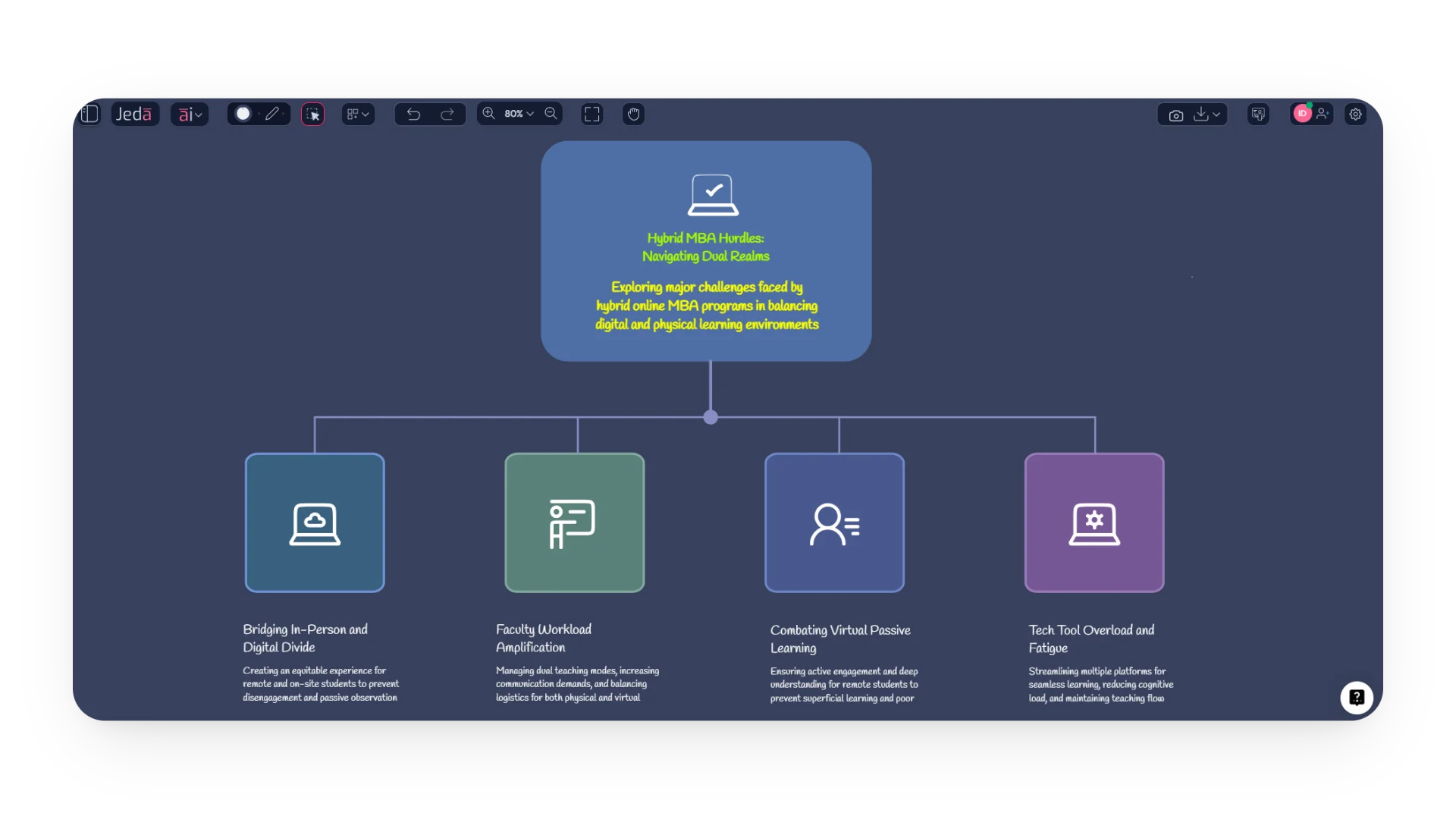
The Future of Hybrid Classrooms
The Hybrid Classes become significantly more impactful when your digital canvas actively elevates the conversation. Imagine effortlessly transforming discussed ideas into structured diagrams and visual frameworks during live discussions, creating a dynamic, multi-sensory dialogue that deeply resonates with executive learners and defines the new standard for Hybrid Learning.
Hybrid Education is enhanced when complex business concepts can be visualized in real-time. Jeda.ai's Agentic AI Whiteboard helps synthesize case study discussions into clear strategic models and summaries, allowing faculty to guide higher-level analysis rather than manually building frameworks, ultimately enriching the Hybrid Learning experience.
A Hybrid Curriculum reaches its full potential when every participant can contribute to and see the evolution of a shared visual thought process. This collaborative approach ensures all students, whether in-room or remote, are equally engaged in building knowledge together, creating a truly cohesive and effective Hybrid Learning environment.
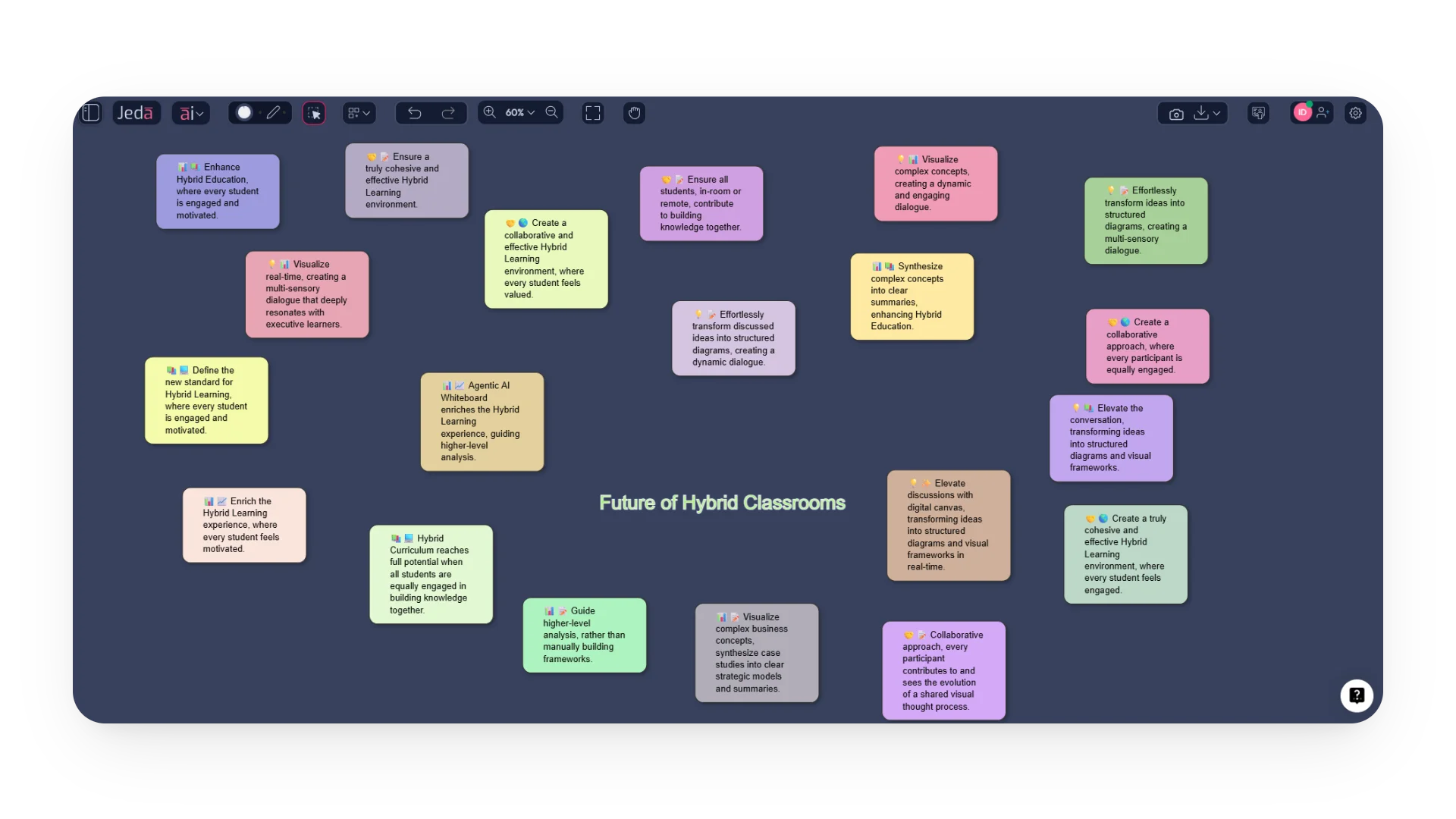
Solving the Top 5 Hybrid MBA Challenges with Our Agentic AI Whiteboard
Here’s how modern technologies, like Jeda.ai, directly address the most persistent pain points in hybrid learning environments, creating more dynamic, efficient, and inclusive EMBA programs.
Solving the Engagement Abyss: Creating One Unified Classroom
For program directors and professors striving for equity, the goal is a classroom where location doesn't dictate participation. The solution lies in a shared visual AI workspace where every student can contribute simultaneously using digital sticky notes, annotations, and comments.
Imagine a live case study discussion where in-person students are talking while remote learners simultaneously add their market analysis to a shared grid. An AI-powered assistant can then instantly group these contributions by theme, like "competitive threats" or "growth opportunities", making every voice heard and creating a truly democratized Hybrid Learning experience.
This approach ensures that remote students are visible contributors, not just silent attendees, fundamentally reshaping the virtual classroom dynamic.
Solving the Administrative Time Sink: From Hours to Minutes
For overwhelmed faculty, prepping for a hybrid session often feels like double the work. The solution is a system that helps generate the foundational elements of a lesson, freeing up instructors to focus on facilitation.
Instead of building a SWOT analysis from scratch before a strategy session, an instructor can prompt our platform with the background context. Jeda AI populates a structured template with initial points, which the class then debates, refines, and validates together during the live session.
This shift allows educators to spend less time on manual preparation and more time on guiding higher-level critical thinking and discussion.
Solving Passive Learning: Making Thinking Visible
For administrators and instructors, proving engagement goes beyond camera usage. The key is transforming students from passive listeners into active co-creators of knowledge.
Consider a complex topic like some organizational processes. Instead of watching a professor draw the TQM Framework, student groups - mixed between in-person and remote - can collaboratively build it on a shared canvas, assigning examples to each step.
This active co-creation provides tangible, artifact-based evidence of participation and comprehension, moving assessment beyond simple metrics to meaningful intellectual contribution.
Solving Tool Fragmentation: One Canvas to Rule 'em All
For IT directors and deans, software sprawl is a major hurdle to adoption and creates a heavy support burden. The ideal is a single, secure platform that serves as a visual intelligence hub.
A single session might involve brainstorming on a digital canvas, analyzing a data set from a spreadsheet to generate a chart, and then arranging those insights into a presentation - all without ever switching tabs or programs.
This consolidated environment reduces cognitive load for users and simplifies training, licensing, and technical support, making the technology easier to adopt and sustain. Watch a brief demo here.
Solving Cohort Cohesion: Building a Persistent Learning Community
For program coordinators focused on retention, fostering a strong network is paramount. The solution is a persistent workspace that acts as a living document of the cohort’s entire learning journey.
A capstone project group can use a shared Agentic AI Whiteboard to maintain their discussion over several weeks, iterating on business models, adding meeting notes, and co-creating their final presentation. This space becomes a central hub for their collaboration, mirroring real-world remote work.
This continuous, shared space helps build the professional relationships and sense of community that are critical to long-term student satisfaction and program success.
How to Implement a Successful Hybrid Learning Environment?
Building a thriving Hybrid Learning program goes beyond just technology; it's about creating a seamless, effective, and sustainable ecosystem for all learners. Here’s a practical guide to get you started.
Choosing the Right Technology Platform
Your technology stack is the backbone of your Hybrid Learning model. Look for a unified hub that brings everything together.
⭐ Seamless Integration: The ideal platform should be a central space for materials, communication, and collaboration, reducing the need to juggle multiple logins and windows.
⭐ Universal Accessibility: Ensure the platform is easy to use for all students, regardless of their location or tech-savviness. Prioritize tools that work reliably on various internet speeds.
⭐ Security and Support: Choose enterprise-grade solutions with robust data privacy protections. Equally important is a reliable, ongoing technical support for both lecturers and students to resolve issues quickly.
Pedagogical Best Practices for Instructors
Effective Hybrid Learning requires a shift in teaching strategy to engage all students equally.
⭐ Foster a Learning Community: Prioritize creating meaningful interactions. Use clear instructions, engaging activities, and continuous feedback to build a sense of community and shared purpose among in-person and remote learners.
⭐ Design for Equivalence: Plan activities where both in-person and online students can participate fully and simultaneously. This avoids treating remote students as an afterthought.
⭐ Set Clear Expectations: From the start, communicate how students should participate, the technology they'll use, and the norms for interaction in this dual-format classroom.
Measuring Success and ROI
For program directors, proving the value of a Hybrid Learning investment is crucial. Move beyond gut feelings and track concrete data.
⭐ Track Engagement Metrics: Monitor quantitative data like online participation rates, assignment submission patterns, and video lecture watch times to gauge student involvement.
⭐ Gather Qualitative Feedback: Use regular surveys to ask students and faculty about their satisfaction, the perceived clarity of lessons, and the overall effectiveness of the hybrid collaboration format.
⭐ Analyze Performance and Retention: Compare student performance data and course completion rates with previous terms. A successful implementation should support, not hinder, educational outcomes and student retention.

Wrapping Up
By embracing dynamic tools that bridge the physical and digital divide, you can transform the hybrid learning model. Jeda.ai provides the essential AI Whiteboard to foster real-time collaboration, deepen engagement, and build a cohesive community for all students. It’s the key to unlocking a more effective, inclusive, and successful future for Hybrid Learning.




%202.svg)